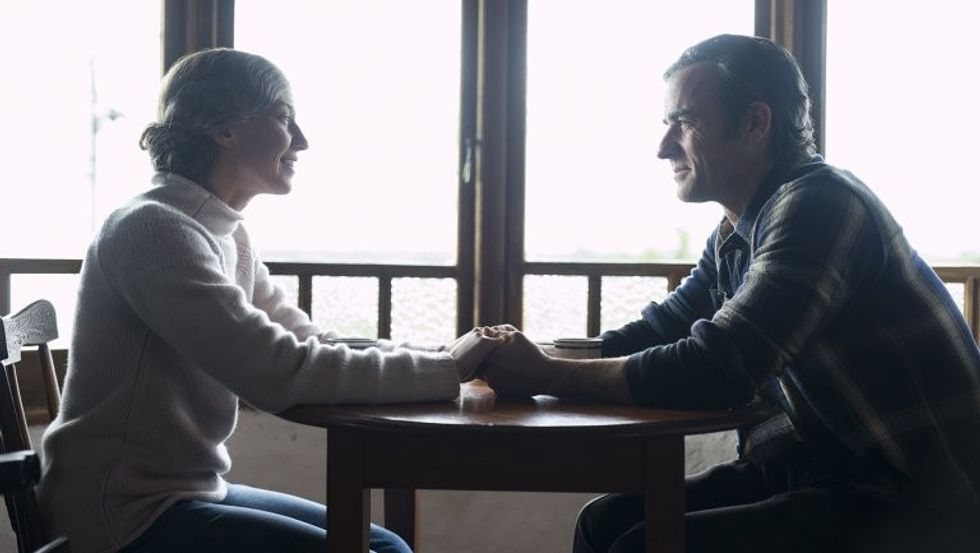What Is an Allegory?
It turns out, that allegories are great places to mine for movie and TV ideas.

'Westworld'
Sometimes, literary devices cross over into the film and TV world. It makes sense, that all entertainment comes from storytelling, and these devices are at the root of that art form. In the world of filmmaking and storytelling, allegory is a powerful tool that filmmakers use to convey complex ideas, themes, and messages.
For that, we have allegory.
What exactly is an allegory, and how can it enhance your storytelling?
In this article, we'll explore the definition of allegory and provide you with some compelling examples from the world of cinema to help you better understand this literary and cinematic device.
Let's get started.
"What is an Allegory?": A Literary Guide for English Students and Teacherswww.youtube.com
Allegory Definition
 'The Matrix'
'The Matrix'Credit: Warner Bros.
An allegory is a storytelling technique in which characters, events, and elements within a narrative represents abstract concepts, moral values, or hidden meanings.
Why Do Filmmakers Use Allegory?

'The Leftovers'
Credit: HBO
Allegories allow filmmakers to explore complex ideas, critique society, or offer commentary on universal themes via subtext and without having to be on the nose.
Rather than have a straightforward expression of an idea, filmmakers will instead use symbolism and metaphor to invite viewers to think critically and interpret the story's layers.
How Can You Use Allegory in Your Own Work?

'Black Mirror'
Credit: Netflix
- Identify the Theme: Start by identifying the theme, moral, or message you want to convey through your work. This could be a social issue, a philosophical concept, a moral dilemma, or any other abstract idea you wish to explore.
- Create a Dual Narrative: Develop two parallel narratives within your work. The first narrative will be the surface story with its own characters, plot, and conflicts. The second narrative will operate on a deeper level, representing the abstract theme or message you've identified.
- Choose Symbolic Elements: Select characters, objects, settings, or events that can serve as symbols for the abstract concepts you're exploring.
- Layered Character Development: Develop your characters with depth. Each character can represent different aspects of the theme or message you're exploring. Their journeys and conflicts can mirror the complexities of the allegory.
- Build Tension: Create tension and conflict in both the surface and allegorical narratives. This keeps the audience engaged while also allowing them to explore the deeper layers of your work.
- Subtlety and Ambiguity: Avoid explaining the allegory explicitly. Leave room for interpretation and allow your audience to draw their own conclusions. Subtlety and ambiguity can enhance the impact of your allegory.
- Seek Feedback: Share your work with others and gather feedback. Ask them if they were able to discern the deeper allegorical meaning and if it resonated with them. Constructive feedback can help you refine your allegory. After receiving feedback, reflect on your work and consider revisions.
- Study Existing Allegories: Lots of inspiration already exists in the public domain. Analyze and study existing works that use allegory effectively. This can provide insights into how to craft your own allegorical narratives.
Allegory Examples in Film and TV
- The Shawshank Redemption (1994): This film, based on Stephen King's novella, serves as an allegory for hope and redemption. Andy Dufresne's imprisonment and eventual escape symbolize the triumph of the human spirit in the face of adversity.
- The Lord of the Rings Trilogy (2001-2003): J.R.R. Tolkien's epic fantasy series, adapted into film by Peter Jackson, is rich with allegory. The One Ring represents the corrupting influence of power, and the struggle against evil reflects the battle between good and evil in the world.
- Eternal Sunshine of the Spotless Mind (2004): This sci-fi romance film explores the intricacies of memory and relationships. It serves as an allegory for the way people deal with painful memories and the idea that erasing them might not be the best solution.
- Wall-E (2008): Pixar's animated masterpiece "Wall-E" is an allegory for environmentalism and the consequences of over-consumption. It portrays a dystopian future where Earth has become uninhabitable due to pollution and waste.
- District 9 (2009): Neill Blomkamp's science fiction film is an allegory for apartheid in South Africa. It uses a scenario where aliens are segregated and discriminated against to comment on racial segregation and prejudice.
- The Twilight Zone (1959-1964):Rod Serling's anthology series is known for its allegorical storytelling. Many episodes, such as "The Monsters Are Due on Maple Street," use science fiction and fantasy to comment on social issues and human behavior.
- Black Mirror (2011-present):Created by Charlie Brooker, Black Mirror is a modern anthology series that explores the dark side of technology and society. Each episode serves as an allegory for contemporary issues related to the digital age.
- The Handmaid's Tale (2017-present): Margaret Atwood's dystopian novel, adapted into a TV series, serves as an allegory for the subjugation of women and the erosion of civil liberties in a theocratic society.
- Westworld (2016-2022):This science fiction series explores themes of artificial intelligence, consciousness, and the consequences of playing god. It serves as an allegory for the ethical and philosophical implications of creating sentient beings.
- The Leftovers (2014-2017): Based on Tom Perrotta's novel, this series explores the aftermath of a mysterious global event where a significant portion of the population disappears. It serves as an allegory for grief, loss, and the search for meaning in the face of tragedy.
The next time you watch a film, keep an eye out for the hidden meanings and allegorical elements that may be lurking beneath the surface.
And when you sit down to write, consider allegories in your work.
Let us know what you think in the comments.
- 'Nope' Meaning— Explanation of Jordan Peele's Alien Movie ›
- 50+ Literary Devices You Need to Know for Your Screenwriting ›
- The Platonic Definition and Plato's Allegory of the Cave ›











